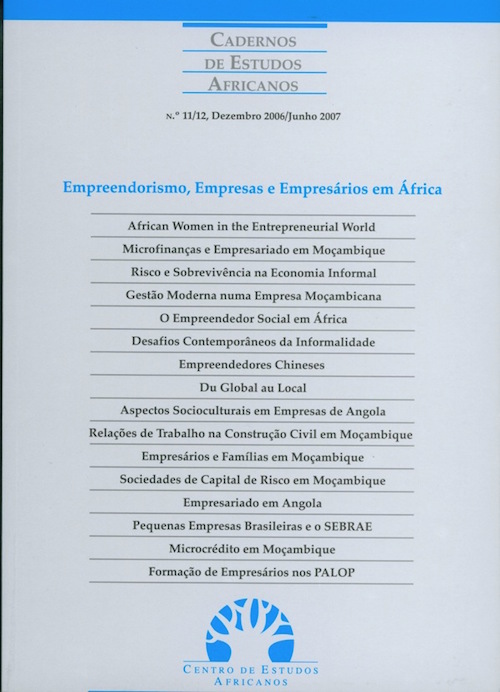From Global to Local: which solutions, what stakes to connect Africa?
DOI:
https://doi.org/10.4000/cea.944Keywords:
Internet, télécommunications, technologies de communication, décentralisation, AfriqueAbstract
We are, in 2006, at a crucial step of the Internet network development: the wide diffusion of the high bandwidth for new multi‑media uses which leads to rebuilding that one can characterize as a digital planning of territories. The problem is the same all around the world: to spread the high bandwidth at a correct cost for the various protagonists from the operator to the end‑user. The solutions to be implemented are the subject of discussions and struggles between various types of actors, private, public, associative, national and international, who are different according to their location at the center or in periphery of the system. Two economic logics are clashing: one which prevailed at the beginnings of the Internet, the co‑operative model where the network would become a world public property, and another which tends to spread today, the pure market logic. The case of Africa where the problems are exacerbated, illustrates what is at stake.
References
AFRISPA (2002), «The half way proposition», Background paper on reverse subsidy of G8 countries by African ISPs, Draft 4, 20th October 2002, <http://www.afrispa.org>.
AFRISPA (2004), <http://research.afrispa.org> (vu juillet 2005).
Benamrane, D., Jaffre, B., Vesrschave, F. X. (org.) (2005), Les télécommunications, entre biens publics et marchandise, Paris, Charles Leopold Mayer.
Bortzmeyer, S. (2005), «Le sans‑fil, une chance pour l’Afrique?», .
Chéneau‑Loquay, A. (2001), «Les territoires de la téléphonie mobile», Netcom, vol. 15 (1‑2).
Chéneau‑Loquay, A. (2004a), «Formes et dynamique des accès publics en Afrique de l’Ouest: vers une modernisation paradoxale», A. Chéneau‑Loquay (dir.), Mondialisation et technologies de la communication en Afrique, Paris, MSHA, Karthala, pp. 171‑209.
Chéneau‑Loquay, A. (2004b), «Comment les NTIC sont‑elles compatibles avec l’économie informelle en Afrique», Annuaire Français de Relations Internationales 2004, volume V, Paris, éditions La Documentation française et Bruylant, pp. 345‑375.
Combes, C. (2004), «Les MIX pour territorialiser l’Internet», communication présentée à Autrans en 2005, Dossier sur le site de LocalGix.org.
CRDI et UIT (2004), «Via l’Afrique, création de points d’échange Internet locaux et régionaux en vue de réaliser des économies en termes financiers et de largeur de bande», document de travail élaboré pour le CRDI et l’UIT à l’occasion du colloque mondial des régulateurs, 2004.
DFID, 2004, «Infrastructure Investment Options», Balancing Act for DFID, African ICT, <http://www.afridigital.net/downloads/DFIDinfrastructurerep.pdf>.
Dupuy, G.(2002), Internet,Géographied’unréseau, Paris, Ellipses, collection Carrefour.
Infodev et Alcatel (2005), «Promouvoir l’investisement etl’innovationprivés», Document Alcatel.
Manach, J. M. (2005), «Accès collectifs en milieu rural: le «far net» indien», Internet Actu, 7 juillet 2005, <http://www.internetactu.net/index.php?p=6052>.
Panos (2005), «Synthesis of the e‑discussion on the development of local traffic in West and Central Africa and beyond», Panos Institute West Africa, Ict Programme – CIPACO Project (Center for International ICT policies Central and West Africa), document 200, <http://www.cipaco.org/document.php?num_doc=200&lang=en>.
Roseman, D. (2003), «The digital divide and the competitive behaviour of Internet backbone providers – a way forward», mars 2003, Roseman associates, International trade and communications consultants.
DOI : 10.1108/14636690310507207
Southwood, R. (2003), «Satellite et fibre optique: bons amis ou pires ennemis?», Balancing Act, <http://www.balancingact‑africa.com>.
Downloads
Published
Issue
Section
License
Copyright (c) 2016 Cadernos de Estudos Africanos

This work is licensed under a Creative Commons Attribution-NonCommercial-ShareAlike 4.0 International License.
I authorize the publication of the submitted article/review of which I am the author.
I also declare that this article is original, that it has not been published in any other way, and that I exclusively assign the publication rights to the journal Cadernos de Estudos Africanos. Reproduction of the article, in whole or in part, in other publications or on other media is subject to the prior authorization of the publisher Centro de Estudos Internacionais do Iscte - Instituto Universitário de Lisboa.


